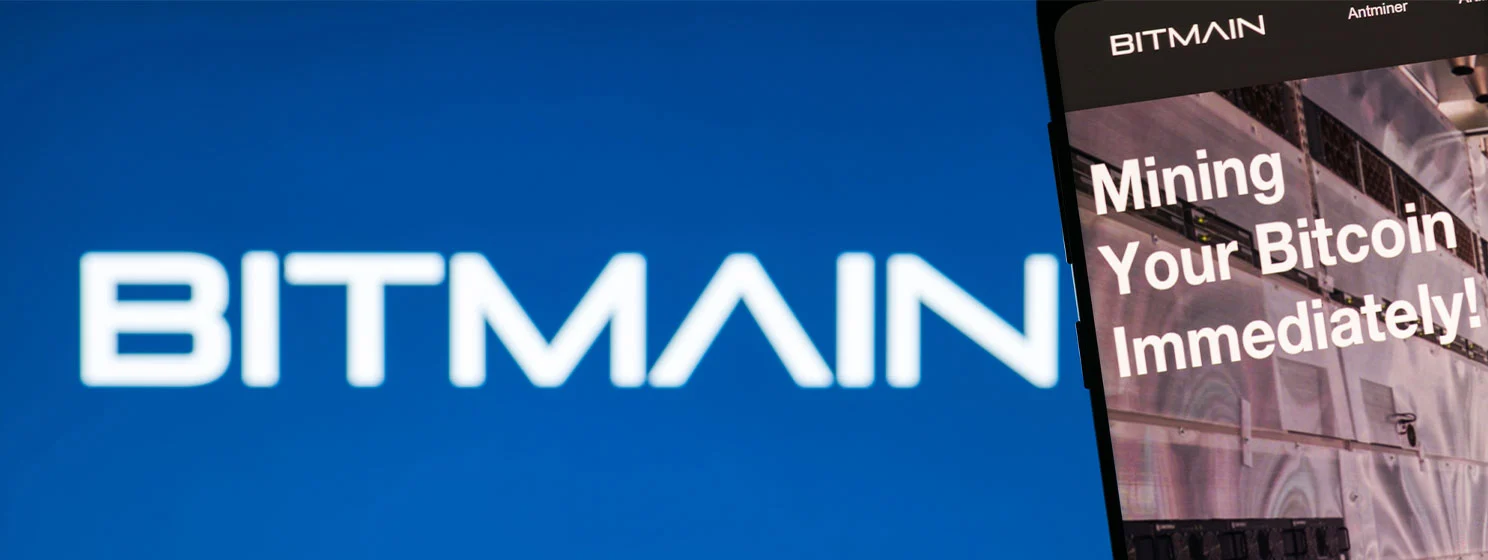|
Getting your Trinity Audio player ready...
|
2023 will be the year that politicians, regulators and law enforcement agencies finally slay the ‘layer 1’ fraud at the heart of ‘crypto,’ after which they’ll target the deeper, more insidious ‘layer 2’ fraud that threatens far greater harm.
Tis the season for dusting off one’s crystal ball and playing prognosticator on the year to come. Compared with this time last year, you’ll find far fewer bulls predicting tokens topping $100,000 in 2023. Those few diehards still braying ‘to the moon’ are predominantly bottom-feeding influencers whose credulous audiences don’t handle pessimism all that well.
Someone who definitely doesn’t fall into this evergreen optimism camp is John Reed Stark, former chief of the U.S. Securities and Exchange Commission (SEC) Office of Internet Enforcement. Stark’s 2023 predictions read like a doctor delivering a Stage 4 cancer diagnosis: more regulatory investigations, more enforcement of existing securities laws, more targeting of tax dodgers and the collapse of crypto crooks such as Binance and Tether (possibly thanks to damning revelations from Sam Bankman Fried).
The lobbying campaign that SBF deployed over the past two years made U.S. politicians, regulators and law enforcement agencies look downright foolish and asleep at the switch. The embarrassed pols aren’t likely to forget this insult. But taking revenge on SBF and his FTX/Alameda cronies won’t be enough to quench their thirst for revenge—and their desire to at least appear to be taking their oversight and consumer protection roles seriously.
Binance seems the logical place for them to start their revenge tour, particularly given the pre-Christmas revelation that Binance US—the allegedly independent, regulatory compliant U.S.-facing operation—was routinely transferring billions in customer funds to and from wallets associated with Binance’s international operations. Tether’s role in propping up the crypto frauds that target consumers will likely come under even greater scrutiny in markets across the globe, leading to demands for actual audits that inevitably expose its reserves as so much vaporware.
Stark is right in his belief that a regulatory tsunami is about to crash over crypto, but he’s so focused on the ‘layer 1’ fraud that he misses the far more damaging ‘layer 2’ fraud perpetrated by the mainstream payment companies and the Silicon Valley tech-bros who support them. Only when this fraud is exposed and mitigated will the true promise of the Bitcoin white paper be realized.
Mastercard of puppets
Crypto’s 2022 downfall was inevitable, given the laws of gravity and the reckless speculation that has plagued the sector ever since the Bitcoin block-size wars. Intended as a low-fee peer-to-peer electronic cash system, Bitcoin had its limbs amputated by Bitcoin Core developers and their Blockstream partners. The resulting crippled protocol known as BTC was thus forever condemned to sit there, inert, under a sign declaring ‘Digital Gold!’ The rampant speculation and get-rich-quick schemes began in earnest shortly thereafter.
Satoshi envisioned Bitcoin handling a level of transactions that would surpass Visa, which at the time was handling around 15 million online transactions per day. Instead, BTC maxed out at several hundred thousand per day. This forced mutation from Bitcoin to BTC served Blockstream’s interests, most notably through its ‘sidechain’ projects such as the Lightning and Liquid networks.
But there were higher powers at work here with their own agendas. As Kurt Wuckert Jr. has so meticulously documented on this site, Barry Silbert’s Digital Currency Group (DCG)—an early Blockstream investor—was birthed in 2015 by a group of major financial institutions, with Mastercard taking the lead role in DCG’s initial funding.
Satoshi may have only referenced Visa in his transaction forecasts, but Mastercard clearly recognized the threat that the original Bitcoin model posed to the credit giants’ comfortable duopoly. A function-free, speculative digital Beanie Baby they could live with; what they couldn’t live with was a low-fee payment rival that promised serious benefits for both merchants and customers.
The credit giants have tried to mask their bad intentions by partnering with exchanges like Binance to allow users to use crypto assets in retail transactions via special debit cards. But this is simply a middleman earning fees for converting crypto to fiat before the transaction is concluded. On their own, BTC and other ‘digital pet rocks’ are still as useless as ever for conducting transactions.
BSV: the mortal threat
When Dr. Craig Wright was doxxed as Satoshi in 2015, the groups that conspired to hobble Bitcoin entered into a new conspiracy to denigrate Wright in the eyes of the public. It simply wouldn’t do for Satoshi to reappear and wreak havoc on those who’d tampered with his vision, like an irate Odysseus returning to Ithaca after 20 years and discovering Penelope’s would-be suitors had turned his home into a Dionysian kegger.
That effort to diminish Wright’s influence gained a new urgency in 2018 with the debut of Bitcoin SV (BSV), which honored the original Bitcoin protocol through an unbounded capacity to scale the blocks on the blockchain. In short order, BSV began processing millions of transactions in a single block, handling tens of millions of transactions per day—just as Satoshi promised.
The Mastercard/DCG/Blockstream cabal soon unleashed an army of keyboard warriors, with the active support of the deep-pocketed founders of Twitter and Facebook, to paint Wright as a fraud and, by extension, BSV as the product of a fraud. Make no mistake: this was an organized, concerted effort to strangle BSV in its crib before its promise of realizing Satoshi’s vision could catch hold in the public consciousness.
This is the ‘layer 2’ fraud I spoke of earlier. While the ‘layer 1’ fraudsters have done significant damage to millions of retail investors around the globe, the damage is insignificant compared to the damage done to society as a whole from the ‘layer 2’ fraud. Because this larger fraud threatens to hold back progress in the form of Web3 projects that will allow individuals to wrest control of their online data from today’s Web2 giants and the payment infrastructure that supports them.
BSV’s demonstrated capacity to enable millions of nanopayments with fees measured in fractions of a cent make BSV the only blockchain capable of taking advantage of the exponential growth in IP addresses that the introduction of the IPv6 standard will bring.
The fact that BSV is the only blockchain capable of handling all this extra internet traffic is why the Institute of Electrical and Electronics Engineers (IEEE) is welcoming Dr. Wright’s input and why the IPv6 Hall of Fame recently inducted Dr. Wright for having made a valuable contribution to the development and deployment of IPv6.
The financial giants and their Web2 allies don’t want you to know any of this. Which is why they’re trying to use the courts to keep Wright off-balance and tarnish his reputation. Thankfully, Wright and BSV are made of sterner stuff.
All rise
The success of the attacks on Wright is reflected in the widely held perception that Wright is the instigator of the legal cases he’s involved in. But with rare exception, Wright has been the defendant in these legal fights, starting with the suit brought in 2018 by Ira Kleiman, brother of Wright’s deceased friend/colleague Dave Kleiman. Ira (unsuccessfully) sought to enrich himself off the sweat of others, specifically, staking a claim to Bitcoin mined by Wright in the period immediately following the technology’s debut in 2009.
Wright is/was involved in two defamation cases, one brought against Wright by Norwegian Twitter troll Magnus ‘Hodlonaut’ Granath. Wright was the plaintiff in a defamation suit against U.K. podcaster Peter McCormack, but Wright only filed suit after McCormack quite literally begged him to do so via a series of inflammatory Twitter posts.
Wright was the (successful) plaintiff in a Bitcoin white paper copyright case against the anonymous Twitter troll Cøbra. Wright is the defendant in a suit brought by the Crypto Open Patent Alliance (COPA), which seeks to deny Wright’s authorship of the white paper. COPA consists of Blockstream, Mark Zuckerberg’s Meta, Jack Dorsey’s Block, Michael Saylor’s Microstrategy, the Coinbase and Kraken exchanges, amongst countless others determined to keep the speculative token-flipping model alive by crushing BSV.
I find it incredibly ironic that the ‘not your keys, not your coins’ crowd that so enthusiastically preaches the doctrine of self-ownership is so eager to condemn Wright for defending his authorship of the white paper. Or that they would be surprised that he would vigorously defend himself against scurrilous public attacks on his character.
Wright is the plaintiff in a suit brought against the developers of numerous blockchains to retrieve over 111,000 Bitcoin, the private keys to which were stolen from him in a 2020 hack of his computer. But his suit is intended to compel these developers to acknowledge the “high level of power and control” that they exercise over their respective chains, and that they have a fiduciary duty to assist victims of theft in recovering their stolen property (provided a court is sufficiently convinced by evidence of the theft to issue a court order).
In other words, Wright is trying to establish precedent that those who would wield control over blockchains have obligations similar to those required of mainstream financial entities. Bitcoin’s original design included an ‘alert key’ intended to notify Bitcoin miners to freeze stolen assets but this was permanently disabled by the BTC Core developers.
Here again, I find it incredible that Wright is being dragged through the mud simply because he’s attempting to drag this industry screaming and kicking toward something resembling compliance with common law. I strongly suspect that governments around the globe, if forced to choose between ‘code is law’ and ‘law is law,’ will side with Wright’s view every time.
The road ahead
The declining fortunes of yesterday’s crypto kings means they will have fewer discretionary funds to funnel to minnows such as Granath and McCormack, so I assume Wright will be forced to endure fewer of these nuisance suits in 2023. COPA will also struggle to maintain a united front as their respective businesses struggle to survive the ‘crypto winter’ (which isn’t ending anytime soon).
The days of ‘number go up’ seem well and truly behind us. The 2022 exposure of so much criminality at the heart of this grifter economy has virtually guaranteed there won’t be another influx of public (i.e., sucker) money anytime soon. And without a steady stream of fresh funds, Ponzi schemes can’t—and won’t—survive. Good riddance.
The current crypto model, which has held sway ever since Bitcoin’s forced conversion to BTC, is a centralized exchange serving as a casino, encouraging ‘gamblers’ to endlessly flip function-free tokens generated by non-scalable platforms. BSV’s scaling capacity enables both fractionalized real-world utility and security tokens, all on-chain, thereby rendering most of the current crypto industry utterly redundant. Small wonder that all these forces have aligned to denigrate Wright and reduce BSV’s visibility.
With regulators, politicians and law enforcement finally awake to the scammers preying on consumers, the downfall of these long-running frauds is nigh. Better still, the thinning of this herd will allow the market to see BSV for what it is: a regulatory friendly and legally compliant blockchain that can serve as both the backbone of the Web3 revolution and an environmentally friendly data storehouse without peer. A little late, in my opinion, but better late than never.
Buckle up, people. 2023 will be a year you won’t forget.
P.S.: If you want to argue any of the above with me, I’ll be at London’s QE II Centre from May 31 to June 2, 2023 for the London Blockchain Conference. I’ll spring for a pint and regale you with the story of how Craig Wright, Stefan Matthews and I saved Bitcoin over a three-day strategy session in 2015. (It’s not quite Lord of the Rings but it does involve one chain to rule them all.)
Watch: London Blockchain Conference 2023 brings government enterprise onto the blockchain

 09-16-2025
09-16-2025 





